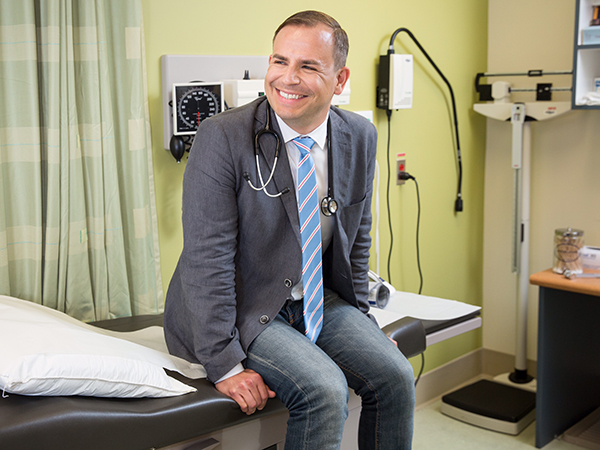Reducing barriers to cancer screening for trans and non-binary people

Among the many healthcare challenges facing trans and non-binary people, cancer poses a multi-edge threat. Not only are trans and non-binary Ontarians significantly under-screened for both breast and cervical cancer, but they may also face care environments that lack the cultural competency when they need them. Further, trans and non-binary people may be at elevated risk of developing cancer as there are higher burdens of poverty, smoking and alcohol use disorders in this community.
Barriers to cancer screening are multiple and complex. Trans and non-binary people may avoid seeking care that does not align with their gender identity (for example, breast cancer and cervical screening). They may also hesitate to access healthcare services if they have suffered discrimination on the part of healthcare professionals and/or organizations. This can range from a lack of cultural competency to overt transphobia.
Some healthcare providers are ill equipped to care for this patient population, as historically professional training programs offered minimal education about the needs of trans and non-binary people. On the other hand, medical visits may be so focused on transition related issues that neither the provider nor the patient have routine cancer screening at top of mind.
At the system level, trans and non-binary people may not receive cancer screening letters from the Ontario Breast Screening Program or the Ontario Cervical Screening Program if there is a mismatch between their screening needs and the gender recorded in the province’s health system database. And, until recently, Ontario did not have a trans-specific policy for breast cancer and cervical screening.
Recognizing that trans and non-binary people are medically underserved and may not be receiving the full benefits of organized screening, Ontario Health (Cancer Care Ontario) has developed a breast cancer and cervical screening policy for trans and non-binary people. Ontario Health (Cancer Care Ontario) is committed to implementing this policy, including integrating gender-neutral language into products and materials, when appropriate.
The policy includes 17 recommendations regarding screening eligibility, timing and screening method for trans and non-binary people. These recommendations will take time to fully implement, however there are four key messages I would like to emphasize.
- Anyone who has a cervix and is eligible for screening should be screened for cervical cancer according to the Ontario Cervical Screening Program guidelines.
- Eligible trans and non-binary people should be screened for breast cancer according to the Ontario Breast Screening Program guidelines.
- Healthcare providers can and should take steps to provide a trans and non-binary friendly screening experience – for example, by calling a mammography clinic ahead of time to advise them of the patient’s needs and ensure the use of the correct pronoun and preferred name.
- Finally, all patients, including trans and non-binary patients, are entitled to respect and consideration.
This policy, which was developed in consultation with members of the trans community as well as other experts in screening and trans health, is just one step towards health equity. To continue the journey, healthcare providers must ensure their clinics and their care is inclusive of all patients.
Dr. Edward Kucharski is a Regional Primary Care Lead with Ontario Health (Cancer Care Ontario) and the Toronto Central Regional Cancer Program. He is also a practicing family physician with South East Toronto Family Health Team and was the LGBTQ2S Faculty of Medicine Lead with the University of Toronto.
Questions about this blog post? Email us at publicaffairs@cancercare.on.ca
